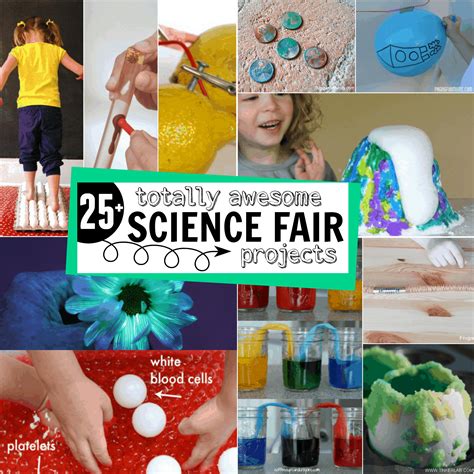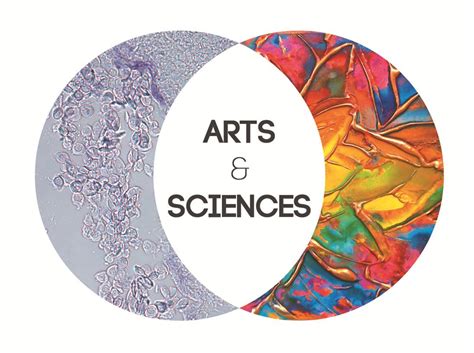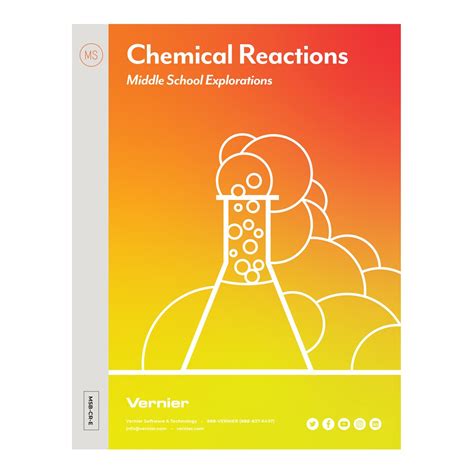Breaking News


Popular News


Discover fun and educational science project ideas for kids, including art and science fusion, DIY weather station, edible DNA model, robotics, and coding activities. Spark their curiosity today!Are you looking for fun and educational science projects to do with your kids? Look no further! In this blog post, we will explore a variety of creative science project ideas that are perfect for kids of all ages. From art and science fusion to DIY weather stations, edible DNA models, and robotics and coding activities, there is something for everyone to enjoy. We will also delve into the world of chemical reactions, allowing kids to conduct exciting experiments and learn about the fascinating world of chemistry. These projects are not only a great way to keep kids entertained, but also to nurture their curiosity and passion for science. So, grab your lab coats and safety goggles, and let’s dive into the world of creative and hands-on science exploration!
Contents

When it comes to engaging kids in science projects, combining art with science is a great way to keep them interested and excited about learning. Art and science fusion projects involve creative expression and scientific exploration, making them perfect for kids of all ages.
One fun project idea is to create a DIY weather station using art supplies and simple scientific tools. By incorporating artistic elements like colorful drawings and designs, kids can visualize and understand weather patterns in a hands-on way. This not only enhances their artistic skills but also teaches them valuable scientific concepts about the weather.
Another creative project that combines art and science is building an edible DNA model using candy and food items. Kids can use different types of candy to represent the four DNA bases and create a delicious and educational art piece. This activity not only allows kids to express their creativity but also helps them grasp the structure of DNA in a fun and memorable way.
| Art and Science Fusion Project Ideas: |
|---|
| DIY Weather Station |
| Edible DNA Model |
By combining art and science in fun and interactive projects, kids can develop a deeper appreciation for both subjects and gain a better understanding of the world around them. These creative science project ideas are perfect for sparking curiosity and imagination in kids of all ages, making learning an enjoyable and enriching experience.

One fun and educational science project idea for kids of all ages is creating a DIY weather station. This project allows kids to learn about the different components of weather and how they can be measured. It’s a hands-on way for them to understand the science behind weather forecasting and climate patterns. To get started, you can use simple materials such as a thermometer, a barometer, and a wind vane to measure temperature, air pressure, and wind direction.
Using li tags, you can create a list of these materials so that kids can easily gather what they need. For example:
Once the materials are gathered, kids can also create a simple table to record their weather measurements over time. This will help them observe patterns and understand how weather changes from day to day. Additionally, this project can be a great opportunity to discuss the importance of monitoring weather for predicting and preparing for natural disasters such as hurricanes and tornadoes.

Looking for a fun and educational science project for your kids? Why not try making an edible DNA model together! This hands-on activity not only teaches kids about the structure of DNA, but also allows them to get creative in the kitchen. To get started, gather some colorful candy such as licorice, gummy bears, and marshmallows, as well as toothpicks to represent the bonds between the nucleotides in DNA.
First, create the double helix structure of DNA by using the candy and toothpicks. You can use different colors of licorice to represent the four nucleotide bases (adenine, thymine, cytosine, and guanine), and then connect them with toothpicks to form the bonds between the bases. This will help kids visualize how the bases pair up in the DNA molecule.
Next, explain the concept of DNA replication by showing how the double helix can unzip and create two identical strands. Use additional candy and toothpicks to demonstrate the process, and discuss the importance of DNA in carrying genetic information from one generation to the next. This project not only teaches kids about the structure of DNA, but also allows them to have a hands-on experience with science in a fun and memorable way.

Introducing kids to robotics and coding at a young age can have a significant impact on their development and future career choices. These activities not only provide a fun and engaging way to learn about technology but also help foster important skills such as problem-solving, critical thinking, and creativity.
One way to incorporate these concepts is through the use of STEM kits and toys that require assembly and programming. For example, kids can build their own robot with a kit and then use coding to make it move, light up, or perform tasks. This hands-on approach allows them to see the direct results of their work and encourages experimentation and innovation.
Another option is to enroll kids in coding workshops or summer camps that focus on robotics and programming. These programs often include projects that involve designing and building simple robots or creating interactive games and animations. By working on these collaborative projects, kids learn how to communicate and collaborate effectively while honing their technical skills.
Additionally, parents and educators can introduce robotics and coding through online resources and educational apps. There are numerous websites and platforms that offer tutorials, games, and challenges to help kids learn the basics of coding and robotics in a self-paced and interactive manner. These resources can be a valuable tool for supplementing classroom learning and inspiring kids to explore STEM fields.

Chemical reactions are an exciting and fundamental part of science that kids of all ages can explore and learn from. There are countless experiments and projects that can be done to help young scientists understand the ways in which different substances interact and change when combined. Through hands-on activities, kids can gain a deeper understanding of the chemical reactions that occur all around us in the world.
One fun and simple project for kids to explore chemical reactions is the classic baking soda and vinegar volcano. By mixing these two household items together, children can observe a bubbling, fizzing reaction as the two substances combine and release carbon dioxide gas. This project not only provides an exciting visual, but also teaches kids about the concept of an acid-base reaction in a way that is both fun and memorable.
Another interesting project for kids to explore chemical reactions is creating a lemon battery. By using a few simple materials, such as a lemon, a couple of different metals, and some wire, kids can observe a chemical reaction that generates enough electricity to power a small light bulb or LED. This project not only demonstrates the concept of a chemical reaction in action, but also introduces kids to the concept of creating energy from unconventional sources.
| Materials needed for Lemon Battery: |
|---|
|
|
|
|
|
|
|
|
By engaging in these hands-on projects, kids can develop a love and appreciation for science, while learning about the fascinating world of chemical reactions. Encouraging kids to explore and experiment with different materials and substances will help them develop critical thinking skills, curiosity, and a passion for discovery.

What are some creative science project ideas for preschoolers?
Some ideas include creating a volcano using baking soda and vinegar, making a rainbow jar, and exploring the concept of sink or float with various objects.
What are some engaging science experiments for elementary school kids?
Elementary school kids can enjoy building a solar oven, creating a homemade slime, experimenting with static electricity, and making a simple circuit with a light bulb and batteries.
How can middle school students explore the world of science through projects?
Middle school students can conduct an experiment on the best conditions for growing mold, build a water filtration system, create a model of the solar system, or investigate the effects of different types of music on plant growth.
What are some captivating science project ideas for high school students?
High school students can explore the effects of caffeine on heart rate, build and launch a rocket, conduct a study on the antibacterial properties of various household items, or design and construct a wind turbine.
Can you suggest some science project ideas that involve environmental awareness?
Some ideas include conducting a waste audit at home, building a compost bin, creating a water usage tracking system, or designing a wildlife-friendly garden.
How can parents and teachers support kids in their science project endeavors?
Parents and teachers can provide guidance, access to necessary materials, encouragement, and opportunities for kids to present their projects to others.
What are the benefits of engaging in science projects for kids of all ages?
Science projects help to develop critical thinking, problem-solving skills, creativity, and a love for learning. They also foster a greater understanding and appreciation of the world around us.